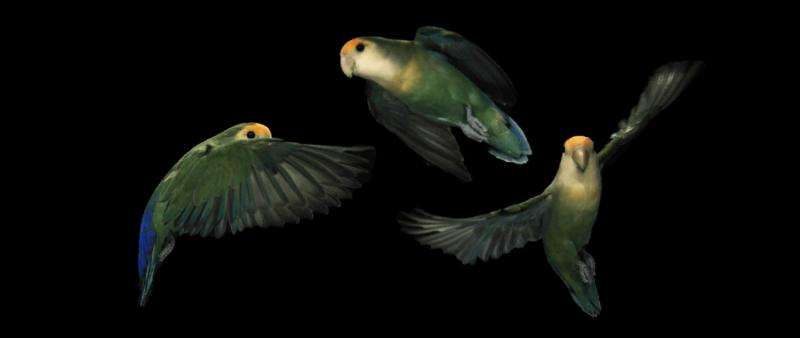Lovebird rotates head 2700 degrees per second while turning, minimizing blind spots

High-speed videos of lovebirds making quick in flight turns reveal how they improve sight and shorten blur by rotating their head at speeds of up to 2700 degrees per second, according to a study published June 24 in the open-access journal PLOS ONE by Daniel Kress from Stanford University, and colleagues.
During flight, turning lovebirds rotate their head at up to 2700 degrees per second, faster than any other vertebrate recorded to date. The authors of this study discovered this super-fast behavior by filming the maneuver at 2000 frames per second during a goal-directed task of take-off, fly away from a perch, turning, and flying back to land on the same perch in a custom-built flight arena.
Analysis of high-speed flight recordings revealed that rapidly turning lovebirds execute extremely fast head turns during turning maneuvers. Lovebirds time these head turns precisely when their wings are covering their eyes, this minimizes the time of obscured sight. Consequently, they shorten phases of blurry and obscured sight into a fraction of the actual turning time, resulting in stable and clear vision during the rest of the maneuver.
The authors suggest that the lovebird's rapid head turn probably enables them to make split second decisions during rapid turns. The authors also hope that the accuracy and speed of these visually guided flight-maneuvers may inspire camera rotation design in drone to improve imaging.
More information: Kress D, van Bokhorst E, Lentink D (2015) How Lovebirds Maneuver Rapidly Using Super-Fast Head Saccades and Image Feature Stabilization. PLoS ONE 10(6): e0129287. DOI: 10.1371/journal.pone.0129287
Journal information: PLoS ONE
Provided by Public Library of Science





















